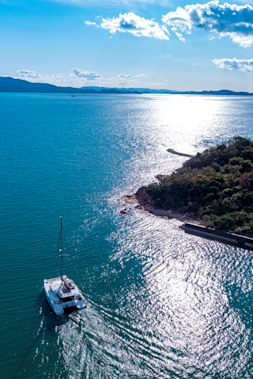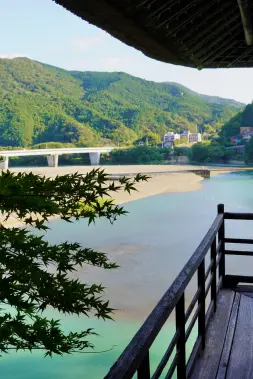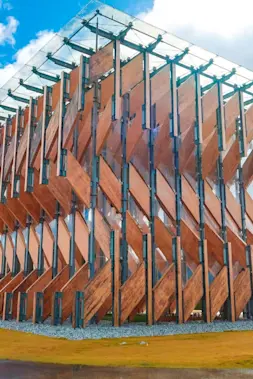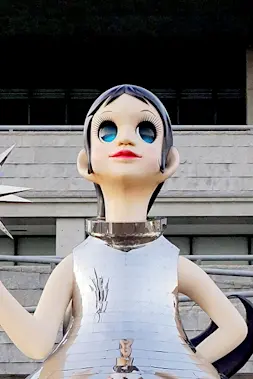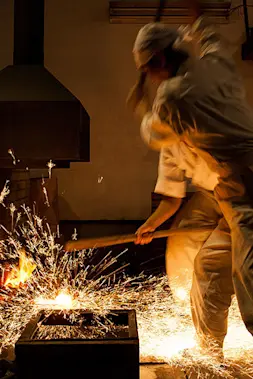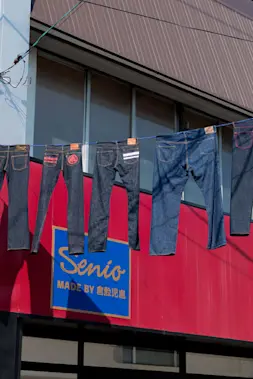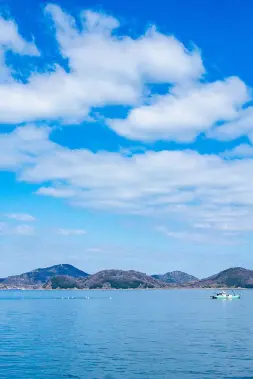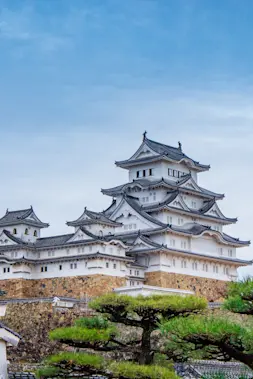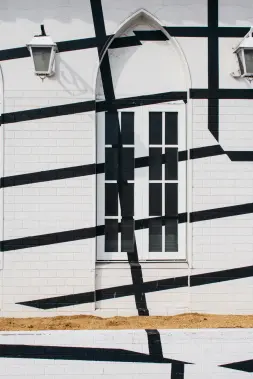Art & Culture
Art Base Momoshima - A Hidden Treasure Trove of Modern Art

-
- DESTINATION NAME
- Hiroshima
-
- RELATED TAGS
-
- LAST UPDATED
- 07 August, 2020
If you’re looking for the hidden gems of Japan’s art scene, you’ll want to put Art Base Momoshima high on your list.
Headquartered on the island of Momoshima, just a short ferry ride from Onomichi in Hiroshima Prefecture, Art Base grew from the ideas of internationally acclaimed artist Yukinori Yanagi, also known for his work on Inujima, another art island off the coast of neighboring Okayama Prefecture. As soon as I heard about Art Base, I knew I had to go. And since I happened to be in Onomichi for a cycling trip down the Shimanami Kaido, I jumped at the opportunity.
Art Base occupies an old schoolhouse which Yanagi converted into a gallery of permanent and temporary works, with anywhere from three to 15 resident artists staying on at a given time. With the population of Momoshima having fallen from 2,700 after WWII to around 400 in recent years, the school stood abandoned when Yanagi acquired it for the Art Base project in 2010. Interestingly enough, the relationship between artists and depopulated islands is mutually beneficial. On the one hand, uncrowded islands like Momoshima offer ample and cost-effective spaces for larger works of art otherwise impracticable in urban centers like Tokyo. And on the other hand, the art projects thus created draw visitors and residents to the islands – providing a revitalizing lifeline to their aging populations.
Under the Art Base banner, Yanagi also converted a ruinous cinema on Momoshima into a permanent art installation, entitled “Hinomaru Illumination,” in which a neon light show dances through the patterns of the postwar Japanese flag, the prewar Japanese flag, and a solar eclipse. Additionally, the folks at Art Base are currently converting an old house on Momoshima into a guesthouse and gallery, due for completion in late 2018, making it that much easier for art enthusiasts and connoisseurs to pay the island a visit. In the meantime, a trip to Momoshima can certainly be done as a one-day operation, however I recommend instead booking a night at Ciela, a charming guesthouse located on a quiet oceanfront corner of the island. Excellent for a beach picnic when sunlight warms the sands, and perfect as a cozy hideaway when the weather proves less cooperative, Ciela exudes quiet island charm in spades. I was traveling with a couple of friends, so we grabbed groceries at a supermarket in Onomichi before heading over to Momoshima. That night we whipped up a tasty pasta in Ciela’s kitchen, and enjoyed a hot shower and sound sleep prior to our next day’s art adventure.
Though Yanagi’s art features prominently at Art Base, their gallery displays a wide range of works by other artists as well, such as “Oil Pool” by Haraguchi Noriyuki, a permanent installation consisting of a shallow, iron frame filled with waste oil. With a surface like a mirror, and an aroma reminiscent of a machine shop, the dark, reflective surface and its illusion of depth certainly invites a range of thoughts about our relationship as a species with this, the artist’s choice of creative material.
Also on display at Art Base, you’ll find an extensive collection of Yanagi’s “ant farm” works, consisting of depictions of national flags and monetary units meticulously recreated with colored sand, and then used temporarily as ant farms. Though the ants have since been lured out with food, the random paths that their tunnels make through the symbolic images produced by Yanagi form a particularly interesting subject for contemplation. One such work, a 91 panel installation of European and Asian flags entitled “Eurasia,” spans an entire wall within one of the former classrooms at Art Base. Another sizable work by Yanagi, “Project: Red, White and Blue – Wandering Mickey,” occupies the former gymnasium, and consists of a wall of brightly painted oil drums surrounding an enormous hamster wheel which in turn contains a gas-powered go-kart with the face of Mickey Mouse emblazoned on the seat cover – a brilliant representation of mass consumer society. Notably, the go-kart can run full speed ahead without ever getting anywhere, driving madly on until its fuel finally runs dry. (Yeah, I’d say that pretty much sums it up…)
However, even if your schedule won’t let you make it all the way out to the island, Art Base’s exhibits aren’t confined to Momoshima alone. While we were in Onomichi, Art Base had a highly impressive art installation by Yanagi on display at Crossroad 2, a dockside warehouse near the entrance of the Shimanami Kaido – in fact, literally right next door to U2 and Cycle Hotel. The warehouse is presently undergoing earthquake-proofing. What we found within the warehouse was in all honesty one of the most powerful and affecting art installations I’ve ever seen. There, opposite a meticulous recreation of a fighter jet fuselage, stood a heap of debris – old televisions, broken furniture, barrels marked with nuclear symbols, and large black bags used to gather nuclear contaminated soil. Rising out of this mass of wreckage glowed the roaming eye of Godzilla, upon which was reflected a succession of real-world footage of atomic detonations. All the while, a deep, apocalyptic rumbling emanated from the debris, filling the warehouse. This unearthly, and politically charged, multimedia display, entitled “F-8E Crusader” (for the fighter jet fuselage) and “God-zilla” (for the rest) – two separate works which nonetheless harmonized so successfully that I was surprised to learn they weren’t originally one display – literally sent chills down my spine.
In an age where abstraction and mass-appeal often serve to discourage political and social commentary in art, seeing works which clearly and unabashedly connect to relevant issues makes for a delightful and refreshing experience – and one well worth the detour from Onomichi, or even Hiroshima. If you’re in the vicinity of the Shimanami Kaido, you owe it to yourself to experience some of the amazing art at Art Base Momoshima.
Photographs & Text Peter Chordas
RELATED DESTINATION
Hiroshima
Hiroshima is the central city of Chugoku region. Hiroshima Prefecture is dotted with Itsukushima Shrine, which has an elegant torii gate standing in the sea; the Atomic Bomb Dome that communicates the importance of peace; and many other attractions worth a visit. It also has world-famous handicrafts such as Kumano brushes.



































